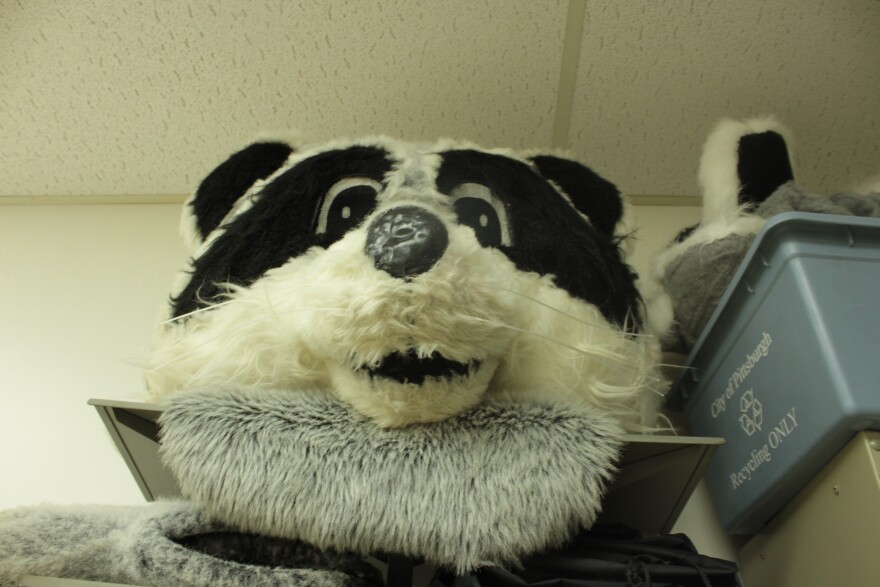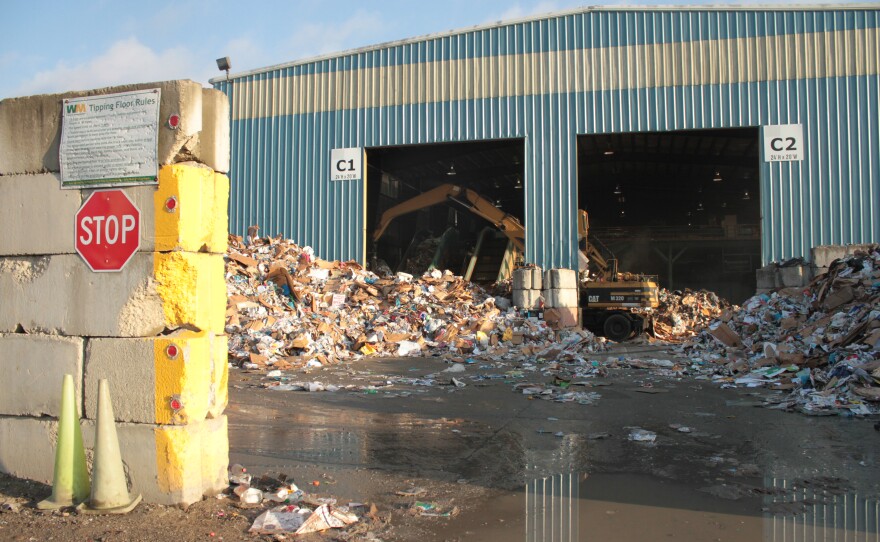Let’s get this out of the way: The stuff you put in the recycling bin does get recycled.
“Yes, we do. We recycle. That’s the name of the game,” said Robert Johns, plant manager of a single-stream material recovery facility, MRF, owned by Waste Management.
From the main office on the site’s eight-acre campus on Neville Island, located in the middle of the Ohio River, Johns sits surrounded by posters about what can and can’t be recycled, bright yellow safety belts and hard hats. The MRF hosts tours multiple times per week from middle schools, high schools, colleges and businesses interested in how best to dispose of their stuff.
On the plant’s tipping floor a bulldozer herds detergent containers, pop cans and newspapers onto a conveyor belt toward a small team of three or four employees who pre-sort the debris of daily life, pulling out objects that can’t be processed by the plant’s machines.
“I've seen them pull out things like bowling balls, flip flops, coolers, curling irons, car batteries, car engines,” said Erika Deyarmin-Young, a public affairs coordinator for the company.
Roughly 12 percent of the 10,000 tons of material brought into the plant every month can’t be recycled. But that’s not because they’re willfully throwing it away, said Kyle Winkler, recycling supervisor for the city’s Bureau of Environmental Services.
“Our biggest challenge I guess is that people are recycling things that are not recyclable.”
Pennsylvania passed the Municipal Waste Planning Recycling and Waste Reduction Act in 1988. It made recycling mandatory for communities over a certain size and required compliance by 1990. To teach people what and how to recycle, Pittsburgh had a campaign called Waste Busters, led by Buster, the human-sized raccoon.

“He is on some of our recycling trucks. Some of the recycling decals and things like that have Buster kind of waving and encouraging residents to recycle,” Winkler said.
Most people don’t know who Buster is anymore, and car engines still show up in the recycling. But the 2008 switch to single-stream recycling—where residents can mix glass, plastic, metal and paper products in one container—was even more effective than Buster's initial message.
“It’s a good program. We’ve seen over the years an increase of people participating. We’re collecting more and more recyclable materials and less and less refuse,” said Guy Costa, Pittsburgh's chief operations officer.
The city currently pays $7 dollars to dispose of a ton of recyclables. But in 2008, the city was making $40 for every ton of recycling. That’s one of the main challenges of single-stream recycling, Winkler said: it depends on the market. And that market can boom and bust.
“Those countries that were taking that material, which is China specifically, they’ve got a certain level of economic prosperity such that they are looking towards reducing their environmental impact. Which means not importing garbage from the U.S.,” he said.
In 2014, Pittsburgh Recycling, which ran the Hazelwood site where Pittsburgh sends its materials, went bankrupt and became a destination for the city’s rats. But it’s not like the city could just stop the service.
“Couple of years ago, a survey was done: what people want from city government. The first thing they wanted was when they dial 9-1-1 they wanted someone to respond. And the second one was they wanted their trash collected,” Costa said.
Winkler said there might be ways to improve the whole system.
Hanging by the door of the Recycling Division is Buster’s grey and white raccoon suit; his head sits on a high shelf nearby.
So much of recycling is education, he said. Maybe Buster will make a come back.
90.5 WESA Celebrates Inventing Pittsburgh is supported by UPMC.






